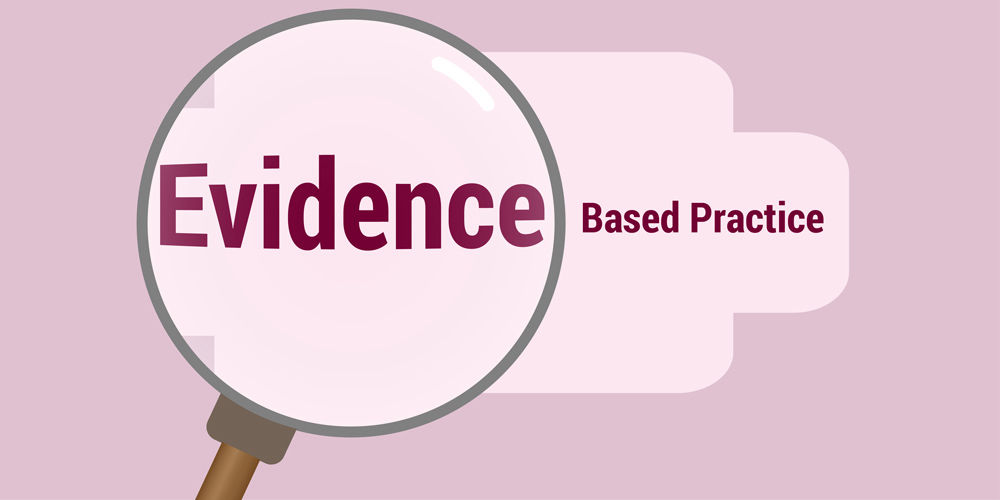arly in my career, I found that asking, “How can I do better?” created enthusiasm for improvement. Starting with teams I’ve managed to University of Utah Health’s Evidence-Based Practice Council, my goal is to create an environment of improvement that starts small and can grow as large as you want.
In its fifth year, the Evidence-Based Practice Poster Fair provides an opportunity for staff, faculty, house staff, and students to do just that—sharing their research and quality projects with colleagues. Here’s how it starts:
#1 Ask for ideas
It always starts with leadership. Let your staff know that you're very interested in being innovative. Let them know you’re interested in best practices—whether from inside the organization or even from other industries. Let them see that you are always looking for ways to improve. If you want to keep the ideas focused, start with our three goals: patient experience, quality, and finance. Just introducing the opportunity to improve and asking for ideas is an important step.
#2 Teach them to fish
Sometimes a person’s first or second improvement project is hard. You might have to spend more time on it. It’s important to look at this work as an investment in the future. Soon your employees will look forward to improving everything about the work. They will be excited about making a difference—and there is so much intrinsic satisfaction in that for them and for you.
The challenge is when things get uncomfortable. Don’t take over; instead, guide them through. We set the assumption right from the beginning that the employee will guide the work with our management team's support. My job is to instill excitement and to walk them through. I coach by saying, “This is a great idea. Let’s talk about how you can review it with the other team members…” The first thing I teach them is the importance of keeping your boss in the loop because your boss can provide crucial mentoring and identify resources.
I always remind people to be proud of their efforts. It’s important to be proud when you’re successful—and even when you’re not. You are trying to make things better.
#3 Leverage student resources
If your barrier is a lack of time, consider engaging with students. Explore opportunities to sponsor interns or identify students that need some hours. I've reached out to the College of Nursing to ask, "Do you have anybody in your master's program that needs to do a project? I have a physician and a nurse over here that want to do a project. They need somebody to do some leg work.” It’s such a great opportunity for a student to know that our clinicians would like their help to make patient care better.
#4 Join the evidence based practice council
The Evidence Based Practice Council is a strong and diverse group of health care professionals. We meet monthly to grow our improvement and research skills through lunch and learn sessions, regional improvement meetings, and learning from the improvements of others. It’s exciting to see our organization’s passion for improvement grow.
Five years ago, the council sponsored our first poster session of system improvement. The enthusiasm to share scholarship is contagious, and this year we will have tripled in size, with a “Virtual Poster Fair” hosted electronically on the E-Channel.
New this year, three projects have been selected for our “Best of the Posters” competition to give live presentations:
- “How Burn Clinic Implemented Patient Reported Outcomes” – presented by Lisa McMurtrey
- “Financial Impact of Testing Standardization for Solid Organ Transplant Recipients” – presented by Sharon Ugolini
- “Improved Depression Screening Rates in the Community Clinics” – presented by Elly Fuertsch
Presentations will take place in the Red Rock conference room on Wednesday, April 25, from 1:00–3:00 PM. Join us to support your peers and celebrate our culture of improvement!
Sue Childress
Including patients in treatment planning improves their experience, and patient reported outcomes (PROs) offer new ways to do just that — talking with patients about how treatment impacts their daily life. Clinical Nurse Coordinator Lisa McMurtrey shares the Burn Clinic team’s award-winning work implementing PROs during patient visits without disrupting flow.
Chief Quality Officer Sandi Gulbransen and Accreditation Manager Kemper Funk explain how this umbrella of standards—ISO-9001—relates to our accreditation process and impacts our daily work.
In an organization as big as U of U Health, it’s hard to know where our work fits into the big picture. System Planning Manager Cassandra Taft highlights five ways teams can meaningfully contribute to Operational Plan priorities, regardless of job role or responsibility.
